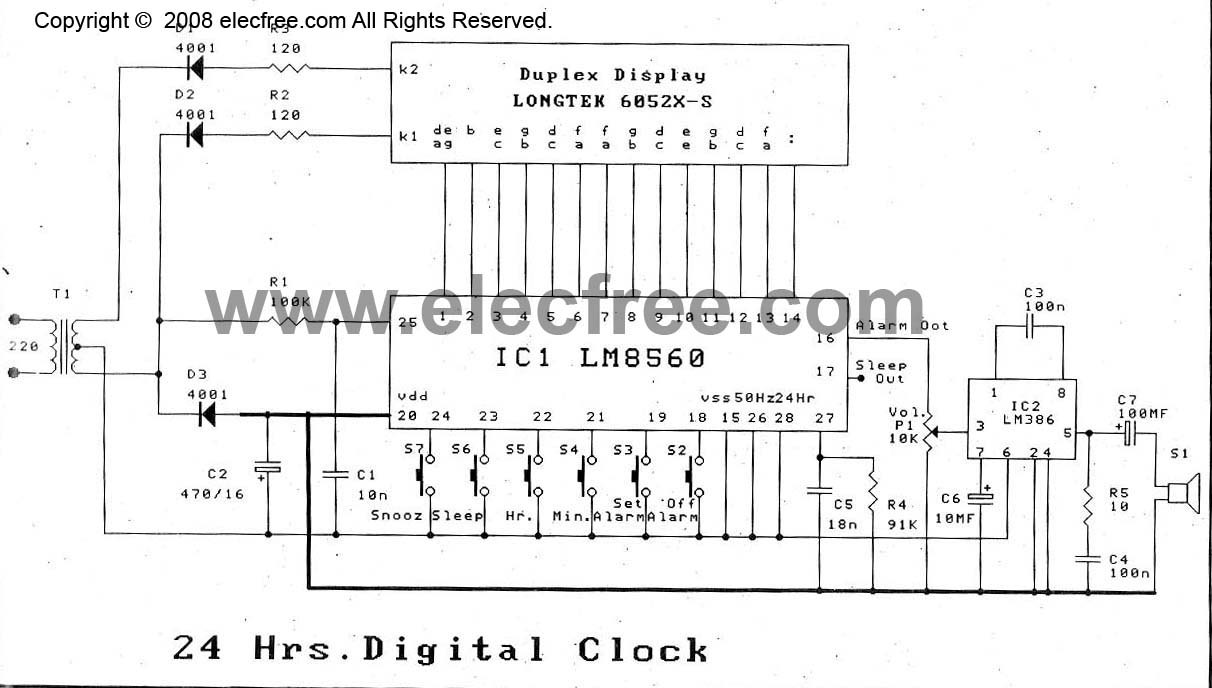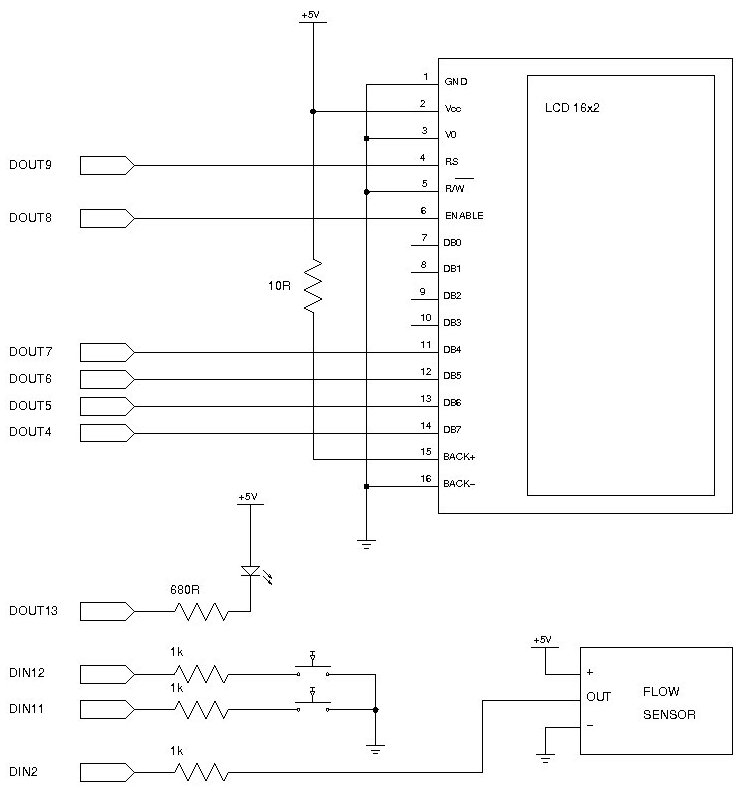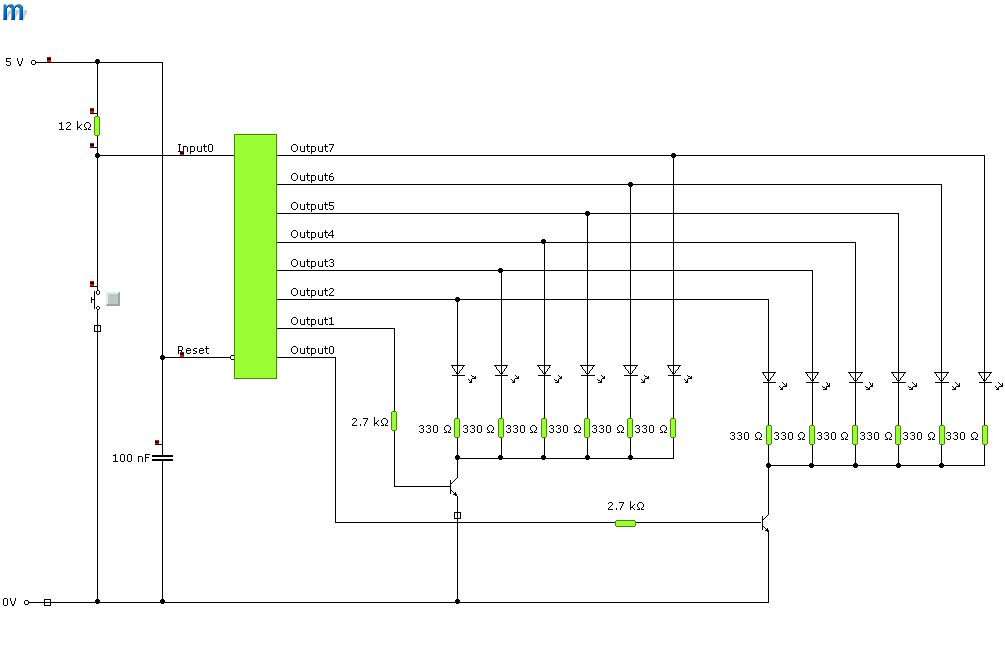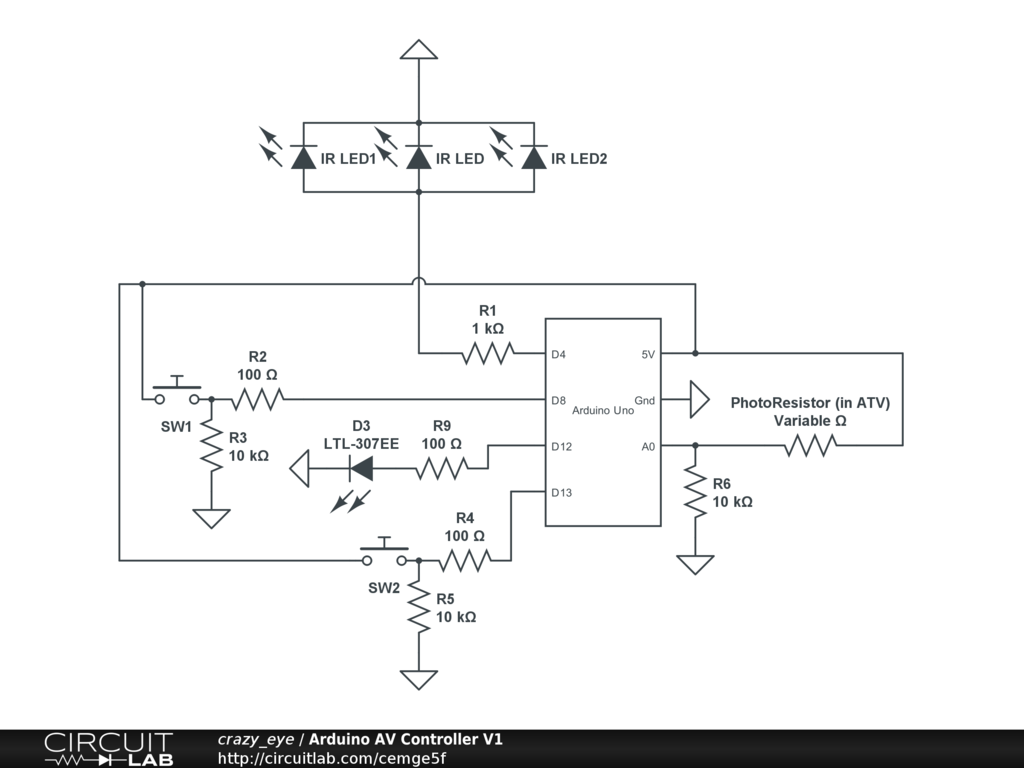
DIY Binary Clock with Arduino
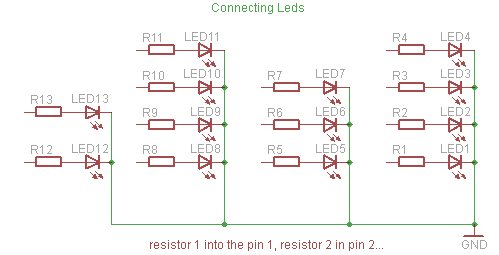
Yesterday, a decision was made to abandon watching a movie in favor of building a binary clock. After some contemplation on the programming aspect, the project was successfully completed. The clock operates effectively, and a detailed explanation of the assembly process is provided. The assembly requires connecting resistors and LEDs. First, the LEDs should be connected with a resistor from pins 1 to 13. It is important to note that the longer leg of the LED is the positive terminal and must be connected to the Arduino output pin, while the shorter leg should be connected to ground. For button connections, one digital input and two analog inputs are utilized. Two push-buttons are needed to adjust the hour and minute settings, connected to analog input pins 0 and 5. Additionally, a standard button is used to turn the LEDs ON/OFF, connected to digital input pin 0. To ensure proper functionality, one leg of each button should connect to a 2.2k Ohm resistor linked to the 5V output, along with the respective analog or digital input, while the other leg connects to ground.
To build a binary clock using an Arduino, the circuit design incorporates multiple components, including resistors, LEDs, and push-buttons, which play crucial roles in the functionality of the clock. The primary elements involved in the assembly include:
1. **LEDs and Resistors**: The LEDs are arranged in a binary format to represent the time, with each LED corresponding to a specific binary digit. The resistors are used to limit the current flowing through the LEDs to prevent damage. Each LED's anode (longer leg) is connected to an Arduino output pin (from pin 1 to pin 13), while the cathode (shorter leg) connects to ground.
2. **Push-Buttons for Time Adjustment**: The time-setting mechanism relies on two push-buttons connected to analog pins. These buttons allow the user to increment the hour and minute values. Specifically, one button is connected to analog input pin 0 for hour adjustments, and the other is connected to analog input pin 5 for minute adjustments. This configuration ensures that the clock can be easily set by the user.
3. **ON/OFF Button**: An additional button connected to digital input pin 0 serves to turn the LEDs ON or OFF. This feature is essential for conserving power when the clock is not in use.
4. **Resistor Configuration**: Each button's circuit includes a 2.2k Ohm resistor connected to the 5V output. This resistor is essential for creating a pull-up configuration, ensuring that the input pin reads a high signal when the button is not pressed and a low signal when it is. The other leg of the button is connected to ground, completing the circuit.
In summary, the binary clock assembly involves a thoughtful arrangement of LEDs, resistors, and buttons, all controlled by an Arduino. This setup not only provides an engaging project for electronics enthusiasts but also serves as a practical demonstration of binary counting and timekeeping using basic electronic components. Proper attention to connections and component specifications is crucial for successful operation.Yesterday I was going to start watching a movie, when me and my friendpedrodecided to give up on the movie and build a binary clock. After sometime thinking on how to program it, we made it. It works beautifully, so I decided to show here how I`ve done. It may not be the easiest way to make it work, but that`s what we`ve done. To assemble the circ uit, you will need to connect first the resistors and leds. To do it, just hook up leds + resistor from the pin 1 to 13. Remember that the bigger leg of the led is positive, and need to be connected to arduino output pin, and the other leg should be on the ground. For connecting the buttons, I`ve used one digital input and two analog inputs. To set change the hour/minute, you will need to use two push-buttons. And they need to be connected to the analog input pin 0 and 5. And to turn leds ON/OFF I`ve used a normal button that is connected to digital input pin 0. To make it work, you need use one leg of the buttons on a 2. 2K Ohm resistor connected to the 5V output together with the analog/digital input, and the other leg going to the ground, something like this:
🔗 External reference
To build a binary clock using an Arduino, the circuit design incorporates multiple components, including resistors, LEDs, and push-buttons, which play crucial roles in the functionality of the clock. The primary elements involved in the assembly include:
1. **LEDs and Resistors**: The LEDs are arranged in a binary format to represent the time, with each LED corresponding to a specific binary digit. The resistors are used to limit the current flowing through the LEDs to prevent damage. Each LED's anode (longer leg) is connected to an Arduino output pin (from pin 1 to pin 13), while the cathode (shorter leg) connects to ground.
2. **Push-Buttons for Time Adjustment**: The time-setting mechanism relies on two push-buttons connected to analog pins. These buttons allow the user to increment the hour and minute values. Specifically, one button is connected to analog input pin 0 for hour adjustments, and the other is connected to analog input pin 5 for minute adjustments. This configuration ensures that the clock can be easily set by the user.
3. **ON/OFF Button**: An additional button connected to digital input pin 0 serves to turn the LEDs ON or OFF. This feature is essential for conserving power when the clock is not in use.
4. **Resistor Configuration**: Each button's circuit includes a 2.2k Ohm resistor connected to the 5V output. This resistor is essential for creating a pull-up configuration, ensuring that the input pin reads a high signal when the button is not pressed and a low signal when it is. The other leg of the button is connected to ground, completing the circuit.
In summary, the binary clock assembly involves a thoughtful arrangement of LEDs, resistors, and buttons, all controlled by an Arduino. This setup not only provides an engaging project for electronics enthusiasts but also serves as a practical demonstration of binary counting and timekeeping using basic electronic components. Proper attention to connections and component specifications is crucial for successful operation.Yesterday I was going to start watching a movie, when me and my friendpedrodecided to give up on the movie and build a binary clock. After sometime thinking on how to program it, we made it. It works beautifully, so I decided to show here how I`ve done. It may not be the easiest way to make it work, but that`s what we`ve done. To assemble the circ uit, you will need to connect first the resistors and leds. To do it, just hook up leds + resistor from the pin 1 to 13. Remember that the bigger leg of the led is positive, and need to be connected to arduino output pin, and the other leg should be on the ground. For connecting the buttons, I`ve used one digital input and two analog inputs. To set change the hour/minute, you will need to use two push-buttons. And they need to be connected to the analog input pin 0 and 5. And to turn leds ON/OFF I`ve used a normal button that is connected to digital input pin 0. To make it work, you need use one leg of the buttons on a 2. 2K Ohm resistor connected to the 5V output together with the analog/digital input, and the other leg going to the ground, something like this:
🔗 External reference
